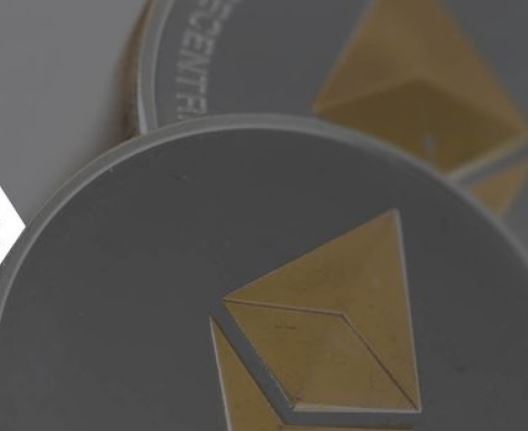What is Ethereum?

In the wake of 2017’s crypto shake up, Ethereum became one of the biggest stars in the space, garnering attention from both investors and tech enthusiasts alike. While Bitcoin is poised to disrupt the world’s payment systems, Ethereum is in a position to disrupt much more, and many enthusiasts and evangelists have suggested it could eventually act as a “world computer.”
So, what is Ethereum? And why is it so important?
Simply put, Ethereum is a blockchain, a programming language, and a cryptocurrency.
The bigger idea, however, is that Ethereum has the potential to act as a global, decentralized computer that cannot be owned by any one person and will never be turned off.
Participants in the ecosystem can build their own decentralized applications, smart contracts, or even a decentralized autonomous organization – but more on these later.
When it burst onto the scene, Ethereum had a ripple effect throughout marketplaces. For the first time ever, developers without sophisticated coding, cryptography, or mathematical backgrounds were able to build their very own blockchain-based platforms, ushering in a new era of possibilities for the space.
So what makes Ethereum so special?
Bitcoin’s Blockchain vs. Ethereum’s Blockchain
Ethereum is often compared to Bitcoin, but the two have very little in common besides market timing and a cryptocurrency.
Bitcoin, the first blockchain-based virtual currency, was released in 2009. The original white paper, published by Satoshi Nakamoto, identified a number of issues within the traditional electronic payment system. In turn, he proposed Bitcoin as a solution: “A purely peer-to-peer version of electronic cash.”
Bitcoin is both a cryptocurrency and a protocol, or a distributed ledger that maintains users’ holdings of the cryptocurrency. Contrary to traditional fiat currencies, Bitcoin has a limited supply in that only 21 million coins will ever be available. Because it is deflationary by design, many have suggested that it may be a great ‘store of value,’ similar to gold, though in the most basic terms, the Bitcoin blockchain is primarily a database of wallets and transactions.
While Bitcoin is undoubtedly an exciting development in the world of finance, Ethereum is a whole different beast.
Ethereum has taken the idea of an immutable distributed digital ledger and run with it.
Introduced to the world in 2013, with the project’s original white paper, Ethereum stores more than just wallet data – it stores computer code, or applications that are executed using the network’s collective computing power. This allows individuals, companies, or even governments to essentially trade computing power for Ether, which can then be used to create decentralized applications that make use of Ethereum’s blockchain. Further, these entities can even create their own tokens.
The Birth of a “World Computer”
Ethereum’s story begins with Vitalik Buterin, a key figure in the cryptocurrency community. Buterin discovered Bitcoin in 2011 and dove right in. As the co-founder of Bitcoin Magazine, widely regarded as the first serious Bitcoin publication, Buterin’s contributions offered insight into the future of cryptocurrencies and the true potential of this new innovation in computer technology.
During his time with Bitcoin Magazine, Buterin began working on an alternative cryptocurrency, Mastercoin. It was then that he realized Bitcoin’s limitations and set out to create his own platform.
Officially announced in 2014, the project included Buterin, Mihai Alisie,Anthony Di Iorio, Charles Hoskinson, Dr. Gavin Wood, and Joseph Lubin. The white paper highlighted the limitations of Bitcoin, offering an entirely new world of solutions that would allow developers to create applications, smart contracts, and even decentralized organizations in a way previously not possible.
“I thought [those in the Bitcoin community] weren’t approaching the problem in the right way. I thought they were going after individual applications; they were trying to kind of explicitly support each [use case] in a sort of Swiss Army knife protocol,” Buterin explained.
Solidify and the Ethereum Virtual Machine
Buterin’s vision was grand – he realized that he would need to build an entirely new blockchain platform that could enable the development of thousands of different decentralized applications. This is where theEthereum Virtual Machine (EVM) comes in.
The EVM, developed with the help of the Ethereum team, is the consensus mechanism used in the project’s ecosystem. It was created to act as the runtime environment for smart contracts on the platform. Because smart contracts require extremely high-level programming skills, the team created an entirely new, simplified programming language to allow developers to more easily interact with the EVM.
Solidify is the primary language of the Ethereum system. It was designed with developers in mind, providing an ‘easy’ way for them to create their own smart contracts.
To create a smart contract, developers use “gas,” which boils down to a small amount of Ether per action. For more complex contracts, the EVM will require more gas. This was a protocol created to prevent denial of service attacks, prevent infinite loops, and encourage efficient coding. Gas is essentially the fuel that runs the machine in order to create smart contracts.
Smart Contracts, Decentralized Apps, and DAOs
Smart contacts are the foundation for all Decentralized Applications (Dapps) and Decentralized Autonomous Organizations (DAOs) created on the Ethereum platform.
“Smart contracts, like traditional contracts, declare an obligation between two parties. The difference, however, is that smart contracts then verify and execute the agreed upon terms automatically, ensuring the parties involved cannot deny the terms and no third parties can interfere with the terms – and it’s all based on a few simple lines of code.“ (You can learn more about smart contracts here).
Smart contacts are what make decentralized applications (Dapps) possible because they allow applications to interact with the blockchain.
The idea behind Dapps, which run on a network of computers as opposed to a single computer, isn’t exactly new and they’ve been around since the introduction of peer-to-peer networks. Tor, BitTorrent, and BitMessage are allexamples of traditional Dapps, which do not require blockchain technology. But Buterin’s and the work of the Ethereum team opened up new possibilities for these apps.
In the Ethereum white paper, Dapps were broken down into three categories. Applications involving money, applications that manage money, and “other.” The “other” category is where things really get interesting. These applications can involve anything from voting platforms, to digital identity, property claims, and governance.
Dapps built on the Ethereum platform have a unique characteristic – they are also capable of creating tokens using a template, the ERC-20, which can then be sold during an initial coin offering (ICO), used to represent ownership or even to harness the computing power of millions of people worldwide.
Here are a few examples of some of Ethereum’s Dapps:
ID2020 – With support from Microsoft and Accenture, ID2020 is a non-profit organization supporting the UN Sustainable Development guide, which aims to provide legal identity to all people by the year 2030. The project is hosted using the Enterprise Ethereum Alliance’s private blockchain protocol.
Golem – Using an Ethereum-based transaction system and the Golem ERC-20 token, users will be able to access and harness the power of a network of users’ personal computers, capable of performing complex scientific equations, CGI rendering, and more.
Provenance – Aiming to improve supply chain management and transparency, Provenance harnesses the power of the Ethereum blockchain to allow businesses to track and share their products with customers.
Perhaps the most exciting idea behind Ethereum, however, is the possibility to create Decentralized Automated Organizations (DAOs). In theory, this could re-write the rules of how a company or government would operate, removing power from a single person and placing it into the hands, or bits, of a smart contract. The idea is that if cryptocurrencies can remove financial middlemen then the Ethereum platform can do the same for organizations.
The Limitations of Decentralized Applications
Due to the complexity and immutability of smart contracts created using blockchain technology, security is a major concern. Any error or bug in the coding of the contract could result in a full-scale meltdown of the application, potentially leaving users without money, a leader, or even an identity.
This is exactly what happened with The DAO.
The DAO was a decentralized autonomous organization that allowed token holders to pick and vote on projects, and, at its height, over 50 proposals were waiting for a decision from users. It was created by the team behind Germany’s Slock.it. The project was launched in April 2016 and proceeded to raise over $150 million, making it the largest crowdfunded project in history at the time.
During the company’s pre-sale, many users noted that there were vulnerabilities within its coding, but The DAO proceeded. As the team was working to resolve the issues in the coding a malicious actor began siphoning Ether collected during the crowdfunding round, and because the team could not reach a consensus on how to proceed over 3.6 million Ether was drained from The DAO’s wallet.
The fallout of this hack was immense.
In an open letter, the ‘attacker’ spelled out the potential consequences of a fork in the Ethereum blockchain, “A soft or hard fork would amount to seizure of my legitimate and rightful ether, claimed legally through the terms of a smart contract. Such fork would permanently and irrevocably ruin all confidence in not only Ethereum but also the in the field of smart contracts and blockchain technology. Many large Ethereum holders will dump their ether, and developers, researchers, and companies will leave Ethereum. Make no mistake: any fork, soft or hard, will further damage Ethereum and destroy its reputation and appeal.”
Despite these concerns, the Ethereum Foundation proposed a soft-fork to essentially freeze the address associated with the stolen funds, requiring 51% of all nodes to go along with the idea. Many users on Reddit expressed their frustration.
When the idea of the soft-fork failed, the Ethereum Foundation forced a split in the blockchain with a hard-fork, transferring the stolen funds to a new address. Confidence in the team was shaken, but ultimately restored in time, with Ethereum hitting an all-time high in December.
The Future of Ethereum
Despite the high-profile DAO hack, Ethereum has pushed forward, and now, with key alliances throughout multiple industries, the Foundation and the idea behind it has become stronger than ever.
Thanks to Ethereum’s user-friendly interface, many companies have moved to develop their own services using the Ethereum platform. The Foundation has even garnered support for some of the world’s most influential businesses in the form of an initiative dubbed the Enterprise Ethereum Alliance.
“The Enterprise Ethereum Alliance connects Fortune 500 enterprises, startups, academics, and technology vendors with Ethereum subject matter experts. Together, we will learn from and build upon the only smart contract supporting blockchain currently running in real-world production — Ethereum — to define enterprise-grade software capable of handling the most complex, highly demanding applications at the speed of business.”
Many organizations are exploring ways to use Ethereum’s technology, from payment systems and remittances to entirely new ideas that could transform the very notion of how we are identified.
The concept of digital identity is a ground-breaking idea that could potentially have ripple effects throughout our entire lives. It could replace passports, drivers’ licenses, birth certificates, and it could even help restore the identities of refugees.
Perhaps the most idealistic proposals emerging, however, are in governance. As a first step towards a truly decentralized autonomous organization, there are initiatives working to integrate Ethereum’s blockchain technology into voting systems. In combination with a digital identity, a blockchain-based voting system could usher in a new era of democracy, where laws can be voted for and hard-coded with absolute consensus.
Conclusion
Ethereum has the potential to be one of the most disruptive platforms ever built. The “world computer,” though still in its infancy, is already growing faster than anyone could have imagined, and it is showing no signs of slowing.
The idea of decentralization is quickly becoming more than just a buzzword.
Dapps and smart contracts are finally giving the power of finance and governance back into the hands of the people. As Ethereum evolves, and more new ideas are deployed, more people will get involved, and more fresh ideas will be realized.
This is not to say that Ethereum will never face any challenges. It will. But right now, the possibilities seem endless.
Michael Kern is a newswriter and copywriter at Oilprice.com, Safehaven.com, and Crypto Insider. His work has been featured on CNN Money, Business Insider, Zerohedge, and more.
“This article published at amity.io”










Responses